DISCLAIMER: I do not keep redfoots, and I only have one tortoise in total. With this in mind, remember that I am in no way an expert, and this should not be used as cold hard proof of how to raise a redfoot. I used information from great keepers on this forum to put everything together. I am mainly turning it into a post for convenience, to make sure it can be easily critiqued, and just for fun. This was originally posted on Reptiles Amino, which at the time of posting this, I moderate. However, when linking it to people outside the app, the pictures don’t show.
IF YOUR PICTURE IS INCLUDED IN THIS CARE SHEET AND YOU FEEL THAT I CREDITED YOU IMPROPERLY OR YOU WANT ME TO TAKE IT DOWN, PLEASE TELL ME!
Family- Testudinidae
Species- Chelonoidis
Genus- C. Carbonarius
Lifespan- 80+ years
Social abilities- They do great Solitary or in groups of all females, or groups with at least three females and one male(but expect breeding). Don’t keep them in pairs.
Size-Varies greatly. Averages of 12-14 inches are normally seen, but it is not uncommon to find individuals 18 inches or larger.
Redfoots are a colorful, forest dwelling species of tortoise that are wonderful to keep and care for. They are quite docile, and, unlike other tortoises, thrive in groups. They are omnivorous, but only eat protien twice a month or so.
They are commonly kept for their nice temperament and pretty colors, and are a blast to keep for someone with the space.
There are also other ways to raise them, so always do your own research.
Redfoot tortoises live in north South America.
(Source)
They live in warm, humid rainforests, where the temperatures rarely fluctuate, and stay in the 80’s year round. The ground is blanketed in vegetation, and small amounts of sunlight are let through the canopy of trees.
Little of the vegetation has much nutritional value, and there is lots of competition for it.


Red-footed tortoises show sex, regional, and individual variations in color, shell shape, and minor anatomical characteristics. Adult carapaces are an elongated oval with sides that are nearly parallel, although the sides of males may curve inwards. They are highly domed and smooth with a rather flat back. Often, a high point over the hips is seen, with a small sloped section over the neck. Growth rings are clearly evident in most individuals, but become worn smooth with age. The shells are generally black, with a yellow areole in the center of each scute.
The head is relatively small with a squared-off profile and flat on top, longer than it is wide. The eye is large with a black iris, and rarely any sclera visible around it. The upper jaw is slightly hooked, and the upper jaw is notched in the front middle. About 15 to 20 ‘teeth’ or fine grooves occur on each side of each jaw. The head is usually colored with orange, yellow, and/or red markings.
Males are slightly larger and more colorful overall. The carapace of a male from north of the Amazon basin shows a ‘wasp waist’, or constrictions along the sides. The male’s plastron is concave to help with positioning during mating. The male’s tail is long and muscular, and generally carried along a side while the female’s tail is short and conical.
The anal scutes vary to allow the male’s tail more mobility and allows more protection for the female’s hind end. The gap between the points of the anal scales and the marginals is wider and the anal scutes form a broader angle- almost a straight line across- in males to allow the tail to move laterally. The angle is more closed (to about a 90° angle) and the points are closer to the marginals in females.
While redfoots are very docile, they, like most tortoises, are not very tolerant of frequent handling. It’s good to let them eat from your hand, pet their shells, touch their legs and head, etc., but I would not recommend taking them out of their enclosures and “snuggling” with them, or anything similar, for long periods of time. Tortoises are somewhat timid, and would rather be alone than be messed with.
Handling has a few benefits, the most important being ease of handling for vets, and for me, reducing the chance of being peed on every time you pick them up.
Never let your tortoise roam your floors, no matter how closely you’re watching. It is too cold, and so many things can go wrong.
Redfoots are very forgiving with diet, and in the wild, eat whatever they can find. Feed a large quantity of weeds and dark, leafy greens daily, big enough so that there is always a little left over at the end of the day. Also feed one piece of fruit (strawberries, blueberries, blackberries, apples, watermelon, banana, raspberries, etc.) or one mushroom daily, each the size of the tortoise’s head. Don’t worry if the amounts aren’t exact, and be sure to feed a varied diet.
Twice a month, feed them (a) night crawler(s), snail(s), slug(s), earthworm(s), mealworm(s), etc. Do not use bugs from your yard, unless you are 100% sure they have not come in contact with pesticides, fertilizer, or any other chemicals.
Dust greens with calcium with D3/vitamins 2-3 times a week.
Be sure to have a large, shallow water bowl( Terra Cotta saucer) available at all times.
A hatchling redfoot can be kept in a 40 gallon tank or tub with a completely closed top (which should last only a few months with proper care), but it is preferable to buy or make your own closed chamber. A good size for hatchlings is 4x2 feet, which should last around a year.
(Picture by daniellenc)

(Picture belongs to Anyfoot)
After they outgrow the hatchling enclosure, it is best to put them in an adult sized enclosure, but you can also move them to larger enclosures as they grow.
An adult should have a BARE minimum enclosure size of 8x4 feet (8x8 being much better) if being housed indoors. It is preferable to house them in a closed chamber, but they can be housed in tortoise tables if full grown. However, it is so much better for them to be housed outside year round. They can live in outdoor sheds with access to outside year round if in a cold climate.
The adults can be housed outdoors full time if the climate is adequate: relatively humid, temperatures in the 60’s- low 90’s, and lots of places with shade and places to hide. If they cannot be housed outdoors during the winter, they should be kept in an 8x8 closed chamber/Table/shed.

Never house babies outdoors. They almost never do well.
Substrate
For hatchlings and babies, I recommend using 2-4 inches of coco coir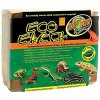
Or peat moss.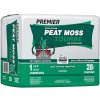
However, mixing in sphagnum moss can be very beneficial to help hold moisture and humidity. Just be careful to make sure that the tortoise doesn’t eat it. Then, put a layer or orchid bark
Or cypress mulch
on top of half of the coco coir/peat moss. That gives them a dryer place to sit if they need to so that they’re not always sitting on wet substrate.
For juveniles and adults, fine grade orchid bark is definitely superior. However, you can always use any of the previously stated. It needs to be 4-6+ inches thick.
Be sure that anything you get is organic. You can find most of these in bulk at plant nurseries and hardware stores.
Never mix any amount of sand into the substrate, as it is an impaction risk, as well as a skin, eye, nose, and cloaka irritant. I also don’t recommend using potting soil or top soil, because it gets muddy when wet, and you can’t be sure of the composition.
Never use rabbit pellets, hay, aspen chips, or any type of rodent bedding. These are much too dry, and can even cause respiratory issues and impaction.
Always keep the top layer of substrate just damp, and pour water in the corners to keep the humidity up. You never want the substrate(not in the corners) to be constantly wet, because that makes the redfoots very susceptible to shell fungus and rot.
Food/Water dishes
Terra cotta saucers are by far the best dishes to use for food and water.
For water, use two big enough for the entire tortoise to get into, and deep enough to come up to the bridge of the shell(where the plastron meets the carapace) sunken into the substrate.
It’s best to have two in the enclosure, or at least one.
For food, use either a 4-6 inch terra cotta saucer sunken into the substrate, or a rough slate or flat rock.
Don’t use anything tall, deep, or small for water or food. They are too hard to get into, and potential drowning hazards. Put the food dish under the UVB light.
DO NOT USE RAMP BOWLS! Ramp bowls are a huge flipping hazard, and are notorious for drowning tortoises. They’re great for lizards and snakes, but not tortoises.
Enrichment, hides, and decor
Redfoots are relatively timid species, and need lots of places to hide. Provide lots of plant cover with (preferably) live plants, and other decorative items.
Provide lots of hides, including humid hides. These can include half logs, caves, flower pots turned on their sides and buried, etc. Be creative!

Never let the temperature in the coolest part of the enclosure fall below 80. That will make the redfoot susceptible to respiratory infections, and can make them less active and not want to eat.
Humidity is very important for redfoots, and it needs to be 75-100%(preferably 90+%) at all times. Lack of humidity is what leads to pyramiding. Not protein, not calcium, not uvb. Just humidity. Pyramiding looks like this-
while a normal shell looks like this-
To achieve this humidity, you need to use a closed chamber enclosure. Not with a mesh or open top, but completely enclosed with no ventilation. It is also best to mount the heating equipment inside the enclosure, because when it’s on top or outside, it creates a chimney affect and draws the humidity and warm air out, and the cold, dry air in.
Spray the enclosure daily, and mix water into the substrate weekly to help achieve the humidity.
Thermometers and Hygrometers
Always use digital thermometers with probes, and digital hygrometer. I do not rely on pet stores for these, and I recommend getting them from hardware stores.
For thermometers, the best ones to use are temperature guns.
These are a miracle, and probably the greatest products ever invented. You can check the temperature of anything in the enclosure, anywhere, instantly. You can get these from Walmart and most hardware stores.
Always use digital Hygrometers. I prefer the ones that also tell temperature-
you can get these from most hardware stores.
Thermometers/Hygrometers to avoid
Never get any non-digital gauges, especially the sticky round ones with the analog dials, or button types. These are notoriously inaccurate, and you could pull 20 off of one shelf, and they would all read different numbers.


Heating
Normal light-producing heat lamps should not be used with redfoots, because it creates a hot-spot, and they are too bright. Instead, ceramic heat emitters should be used to keep temperatures constantly above 80 degrees.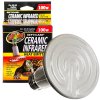
It is best(and very recommended)to use a thermostat like Habistat for ceramic heat emitters.
When using any heat sources that require fixtures, always use one with a ceramic top.
Without using one, you risk starting a fire, and it can even burn out heat lamps much faster.
Your CHE will likely create a hot spot. To fix this, you need to create a shield

(Pictures by Anyfoot)
Or block off the area below it so that the tortoise can not get under it. You can use decorations, or even a large hide.
UVB
It’s best to go with a tropical tube light, in a T8 or T5 hood. Here’s an example-
There are multiple brands you can go with, but you should always use the long “tube” types, and not any compact fluorescents.
It’s best to put the lighting on one side of the enclosure(along the length or width), so that the majority of the enclosure isn’t too bright.
Lighting to avoid
Any kind of colored lighting. Tortoises can see the light and the color, so it keeps them up at night, along with making them eat their substrate and messing with their heads because it makes their world red. This goes for any species of tortoise, and most, if not all, species of reptiles.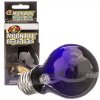

Any kind of coil or compact bulbs. Not only do these produce very little uvb, but they are also known to cause terrible eye burns, and even temporary blindness. These should not be used for any reptile.
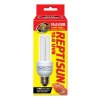
Any spot bulbs. They are much too desiccating on the shells, and much too bright and hot for redfoots. These shouldn’t be used for any tortoises, but are fine for most desert species of reptiles(other than tortoises).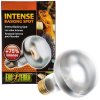

Any UVB made for desert reptiles, or labeled as intense. These are too bright, and usually too strong.
Mercury vapor bulbs. Too bright, and much too intense and desiccating.
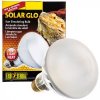
Daily, spot clean the enclosure for any poop or leftover food. Also remove any mold growing on the surface of the substrate if you find any.
Daily care
Daily,
-soak hatchling-100 gram tortoises for 15-45 minutes, or more. After the 100 gram mark, you can start lowering it to every other day, and gradually to once a week for an adult. You can also soak daily for its entire life. Nothing like good hydration!
-Feed and replace water
-mist the tank well, and be sure to pour water into the substrate and mix it up weekly.
-Be sure that humidity and temperatures are correct.
-Did you just get your tortoise? New tortoises can take up to a month to become acclimated to their new enclosure. Leave your tortoise alone for a week, and don’t handle much. If your conditions are correct, they should start being active in no time.
-Check your temperatures and lighting. Are they above 80 and below 90? Do you have any bright lights? Temperatures being too low will cause tortoises to become sluggish, and unable to digest food. Temperatures being too high or lights too bright can be too stressful, and can cause them to hide. Fixing your lighting and heating may fix this problem.
-does your tortoise have a respiratory infection? Follow this post- http://aminoapps.com/p/wttnhp
Respiratory infection
Follow this post- http://aminoapps.com/p/wttnhp
Shell Fungus
This is a very common problem in redfoots due to being a very humid species.
Shell Fungus is caused by being on a substrate with a top layer that is too wet.
([URL-https://tortoiseforum.org/index.php?threads/What-Shell-Fungus-Looks-like.163109/]Source[/URL])
First, take a credit card or something similar, and use it to scrape off all of the fungus.
Then, apply an athletes foot cream(you can get it from the dollar store) to the plastron, or where the fungus was.
Third, keep the substrate dry until it goes away.
Shell Fungus is a very common occurrence in redfoots, so don’t worry if it happens.
Now, if you find shell ROT, contact a vet.
http://tortoiselibrary.com Is a great resource for redfoot info.
Dont follow the advice of
Anyone from YouTube, including Kamp Kenan. While there are definitely some good ones out there, most of these people are spreading incorrect and outdated info that can lead to a dead, sick, or not thriving tortoise. Stick with tortoiseforum.com , and the tortoise library.
http://tortoiselibrary.com
https://en.m.wikipedia.org/wiki/Red-footed_tortoise
IF YOUR PICTURE IS INCLUDED IN THIS CARE SHEET AND YOU FEEL THAT I CREDITED YOU IMPROPERLY OR YOU WANT ME TO TAKE IT DOWN, PLEASE TELL ME!
Species info
Common name-Redfoot, Yellowfoot, CherryheadFamily- Testudinidae
Species- Chelonoidis
Genus- C. Carbonarius
Lifespan- 80+ years
Social abilities- They do great Solitary or in groups of all females, or groups with at least three females and one male(but expect breeding). Don’t keep them in pairs.
Size-Varies greatly. Averages of 12-14 inches are normally seen, but it is not uncommon to find individuals 18 inches or larger.
OVERVIEW
Redfoots are a colorful, forest dwelling species of tortoise that are wonderful to keep and care for. They are quite docile, and, unlike other tortoises, thrive in groups. They are omnivorous, but only eat protien twice a month or so.
They are commonly kept for their nice temperament and pretty colors, and are a blast to keep for someone with the space.
There are also other ways to raise them, so always do your own research.
REGION & NATURAL HABITAT
Redfoot tortoises live in north South America.

(Source)
They live in warm, humid rainforests, where the temperatures rarely fluctuate, and stay in the 80’s year round. The ground is blanketed in vegetation, and small amounts of sunlight are let through the canopy of trees.
Little of the vegetation has much nutritional value, and there is lots of competition for it.



APPEARANCE AND SIZE
Red-footed tortoises show sex, regional, and individual variations in color, shell shape, and minor anatomical characteristics. Adult carapaces are an elongated oval with sides that are nearly parallel, although the sides of males may curve inwards. They are highly domed and smooth with a rather flat back. Often, a high point over the hips is seen, with a small sloped section over the neck. Growth rings are clearly evident in most individuals, but become worn smooth with age. The shells are generally black, with a yellow areole in the center of each scute.

The head is relatively small with a squared-off profile and flat on top, longer than it is wide. The eye is large with a black iris, and rarely any sclera visible around it. The upper jaw is slightly hooked, and the upper jaw is notched in the front middle. About 15 to 20 ‘teeth’ or fine grooves occur on each side of each jaw. The head is usually colored with orange, yellow, and/or red markings.

Males are slightly larger and more colorful overall. The carapace of a male from north of the Amazon basin shows a ‘wasp waist’, or constrictions along the sides. The male’s plastron is concave to help with positioning during mating. The male’s tail is long and muscular, and generally carried along a side while the female’s tail is short and conical.
The anal scutes vary to allow the male’s tail more mobility and allows more protection for the female’s hind end. The gap between the points of the anal scales and the marginals is wider and the anal scutes form a broader angle- almost a straight line across- in males to allow the tail to move laterally. The angle is more closed (to about a 90° angle) and the points are closer to the marginals in females.

HANDLING AND TEMPERAMENT
While redfoots are very docile, they, like most tortoises, are not very tolerant of frequent handling. It’s good to let them eat from your hand, pet their shells, touch their legs and head, etc., but I would not recommend taking them out of their enclosures and “snuggling” with them, or anything similar, for long periods of time. Tortoises are somewhat timid, and would rather be alone than be messed with.
Handling has a few benefits, the most important being ease of handling for vets, and for me, reducing the chance of being peed on every time you pick them up.
Never let your tortoise roam your floors, no matter how closely you’re watching. It is too cold, and so many things can go wrong.
DIET
Redfoots are very forgiving with diet, and in the wild, eat whatever they can find. Feed a large quantity of weeds and dark, leafy greens daily, big enough so that there is always a little left over at the end of the day. Also feed one piece of fruit (strawberries, blueberries, blackberries, apples, watermelon, banana, raspberries, etc.) or one mushroom daily, each the size of the tortoise’s head. Don’t worry if the amounts aren’t exact, and be sure to feed a varied diet.
Twice a month, feed them (a) night crawler(s), snail(s), slug(s), earthworm(s), mealworm(s), etc. Do not use bugs from your yard, unless you are 100% sure they have not come in contact with pesticides, fertilizer, or any other chemicals.
Dust greens with calcium with D3/vitamins 2-3 times a week.
Be sure to have a large, shallow water bowl( Terra Cotta saucer) available at all times.
HOUSING
SizeA hatchling redfoot can be kept in a 40 gallon tank or tub with a completely closed top (which should last only a few months with proper care), but it is preferable to buy or make your own closed chamber. A good size for hatchlings is 4x2 feet, which should last around a year.

(Picture by daniellenc)


(Picture belongs to Anyfoot)
After they outgrow the hatchling enclosure, it is best to put them in an adult sized enclosure, but you can also move them to larger enclosures as they grow.
An adult should have a BARE minimum enclosure size of 8x4 feet (8x8 being much better) if being housed indoors. It is preferable to house them in a closed chamber, but they can be housed in tortoise tables if full grown. However, it is so much better for them to be housed outside year round. They can live in outdoor sheds with access to outside year round if in a cold climate.
The adults can be housed outdoors full time if the climate is adequate: relatively humid, temperatures in the 60’s- low 90’s, and lots of places with shade and places to hide. If they cannot be housed outdoors during the winter, they should be kept in an 8x8 closed chamber/Table/shed.


Never house babies outdoors. They almost never do well.
Substrate
For hatchlings and babies, I recommend using 2-4 inches of coco coir

Or peat moss.

However, mixing in sphagnum moss can be very beneficial to help hold moisture and humidity. Just be careful to make sure that the tortoise doesn’t eat it. Then, put a layer or orchid bark

Or cypress mulch

on top of half of the coco coir/peat moss. That gives them a dryer place to sit if they need to so that they’re not always sitting on wet substrate.
For juveniles and adults, fine grade orchid bark is definitely superior. However, you can always use any of the previously stated. It needs to be 4-6+ inches thick.
Be sure that anything you get is organic. You can find most of these in bulk at plant nurseries and hardware stores.
Never mix any amount of sand into the substrate, as it is an impaction risk, as well as a skin, eye, nose, and cloaka irritant. I also don’t recommend using potting soil or top soil, because it gets muddy when wet, and you can’t be sure of the composition.
Never use rabbit pellets, hay, aspen chips, or any type of rodent bedding. These are much too dry, and can even cause respiratory issues and impaction.
Always keep the top layer of substrate just damp, and pour water in the corners to keep the humidity up. You never want the substrate(not in the corners) to be constantly wet, because that makes the redfoots very susceptible to shell fungus and rot.
Food/Water dishes
Terra cotta saucers are by far the best dishes to use for food and water.
For water, use two big enough for the entire tortoise to get into, and deep enough to come up to the bridge of the shell(where the plastron meets the carapace) sunken into the substrate.

It’s best to have two in the enclosure, or at least one.
For food, use either a 4-6 inch terra cotta saucer sunken into the substrate, or a rough slate or flat rock.
Don’t use anything tall, deep, or small for water or food. They are too hard to get into, and potential drowning hazards. Put the food dish under the UVB light.
DO NOT USE RAMP BOWLS! Ramp bowls are a huge flipping hazard, and are notorious for drowning tortoises. They’re great for lizards and snakes, but not tortoises.

Enrichment, hides, and decor
Redfoots are relatively timid species, and need lots of places to hide. Provide lots of plant cover with (preferably) live plants, and other decorative items.
Provide lots of hides, including humid hides. These can include half logs, caves, flower pots turned on their sides and buried, etc. Be creative!


TEMPERATURE AND HUMIDITY
Redfoot tortoises require temps around 80-86 degrees at all times, day and night. There should be no basking spot, as redfoots are not a basking species, and temperatures being too hot or lights being too bright is greatly stressful for them.Never let the temperature in the coolest part of the enclosure fall below 80. That will make the redfoot susceptible to respiratory infections, and can make them less active and not want to eat.
Humidity is very important for redfoots, and it needs to be 75-100%(preferably 90+%) at all times. Lack of humidity is what leads to pyramiding. Not protein, not calcium, not uvb. Just humidity. Pyramiding looks like this-

while a normal shell looks like this-

To achieve this humidity, you need to use a closed chamber enclosure. Not with a mesh or open top, but completely enclosed with no ventilation. It is also best to mount the heating equipment inside the enclosure, because when it’s on top or outside, it creates a chimney affect and draws the humidity and warm air out, and the cold, dry air in.
Spray the enclosure daily, and mix water into the substrate weekly to help achieve the humidity.
Thermometers and Hygrometers
Always use digital thermometers with probes, and digital hygrometer. I do not rely on pet stores for these, and I recommend getting them from hardware stores.
For thermometers, the best ones to use are temperature guns.

These are a miracle, and probably the greatest products ever invented. You can check the temperature of anything in the enclosure, anywhere, instantly. You can get these from Walmart and most hardware stores.
Always use digital Hygrometers. I prefer the ones that also tell temperature-

you can get these from most hardware stores.
Thermometers/Hygrometers to avoid
Never get any non-digital gauges, especially the sticky round ones with the analog dials, or button types. These are notoriously inaccurate, and you could pull 20 off of one shelf, and they would all read different numbers.


LIGHTING AND HEATING
Being forest tortoises that usually have very little sunlight because of the thick canopy of trees, and very constant, warm temperatures, Redfoots are not very tolerant of bright lights or temperatures being too hot or too cold. That’s why it is very important to make sure that your heating and lighting are adequate.Heating
Normal light-producing heat lamps should not be used with redfoots, because it creates a hot-spot, and they are too bright. Instead, ceramic heat emitters should be used to keep temperatures constantly above 80 degrees.

It is best(and very recommended)to use a thermostat like Habistat for ceramic heat emitters.
When using any heat sources that require fixtures, always use one with a ceramic top.

Without using one, you risk starting a fire, and it can even burn out heat lamps much faster.
Your CHE will likely create a hot spot. To fix this, you need to create a shield


(Pictures by Anyfoot)
Or block off the area below it so that the tortoise can not get under it. You can use decorations, or even a large hide.
UVB
It’s best to go with a tropical tube light, in a T8 or T5 hood. Here’s an example-

There are multiple brands you can go with, but you should always use the long “tube” types, and not any compact fluorescents.
It’s best to put the lighting on one side of the enclosure(along the length or width), so that the majority of the enclosure isn’t too bright.
Lighting to avoid
Any kind of colored lighting. Tortoises can see the light and the color, so it keeps them up at night, along with making them eat their substrate and messing with their heads because it makes their world red. This goes for any species of tortoise, and most, if not all, species of reptiles.


Any kind of coil or compact bulbs. Not only do these produce very little uvb, but they are also known to cause terrible eye burns, and even temporary blindness. These should not be used for any reptile.


Any spot bulbs. They are much too desiccating on the shells, and much too bright and hot for redfoots. These shouldn’t be used for any tortoises, but are fine for most desert species of reptiles(other than tortoises).


Any UVB made for desert reptiles, or labeled as intense. These are too bright, and usually too strong.

Mercury vapor bulbs. Too bright, and much too intense and desiccating.


CLEANING AND DAILY CARE
CleaningDaily, spot clean the enclosure for any poop or leftover food. Also remove any mold growing on the surface of the substrate if you find any.
Daily care
Daily,
-soak hatchling-100 gram tortoises for 15-45 minutes, or more. After the 100 gram mark, you can start lowering it to every other day, and gradually to once a week for an adult. You can also soak daily for its entire life. Nothing like good hydration!
-Feed and replace water
-mist the tank well, and be sure to pour water into the substrate and mix it up weekly.
-Be sure that humidity and temperatures are correct.
TROUBLESHOOTING
Not eating/Lethargic/inactive-Did you just get your tortoise? New tortoises can take up to a month to become acclimated to their new enclosure. Leave your tortoise alone for a week, and don’t handle much. If your conditions are correct, they should start being active in no time.
-Check your temperatures and lighting. Are they above 80 and below 90? Do you have any bright lights? Temperatures being too low will cause tortoises to become sluggish, and unable to digest food. Temperatures being too high or lights too bright can be too stressful, and can cause them to hide. Fixing your lighting and heating may fix this problem.
-does your tortoise have a respiratory infection? Follow this post- http://aminoapps.com/p/wttnhp
Respiratory infection
Follow this post- http://aminoapps.com/p/wttnhp
Shell Fungus
This is a very common problem in redfoots due to being a very humid species.
Shell Fungus is caused by being on a substrate with a top layer that is too wet.

([URL-https://tortoiseforum.org/index.php?threads/What-Shell-Fungus-Looks-like.163109/]Source[/URL])
First, take a credit card or something similar, and use it to scrape off all of the fungus.
Then, apply an athletes foot cream(you can get it from the dollar store) to the plastron, or where the fungus was.
Third, keep the substrate dry until it goes away.
Shell Fungus is a very common occurrence in redfoots, so don’t worry if it happens.
Now, if you find shell ROT, contact a vet.
FURTHER READING
tortoiseforum.com (also have an app) is the best resource by far for any tortoise owner. Everyone with, or plans to buy, a tortoise should join.http://tortoiselibrary.com Is a great resource for redfoot info.
Dont follow the advice of
Anyone from YouTube, including Kamp Kenan. While there are definitely some good ones out there, most of these people are spreading incorrect and outdated info that can lead to a dead, sick, or not thriving tortoise. Stick with tortoiseforum.com , and the tortoise library.
SOURCES
tortoiseforum.orghttp://tortoiselibrary.com
https://en.m.wikipedia.org/wiki/Red-footed_tortoise
Attachments
Last edited:



